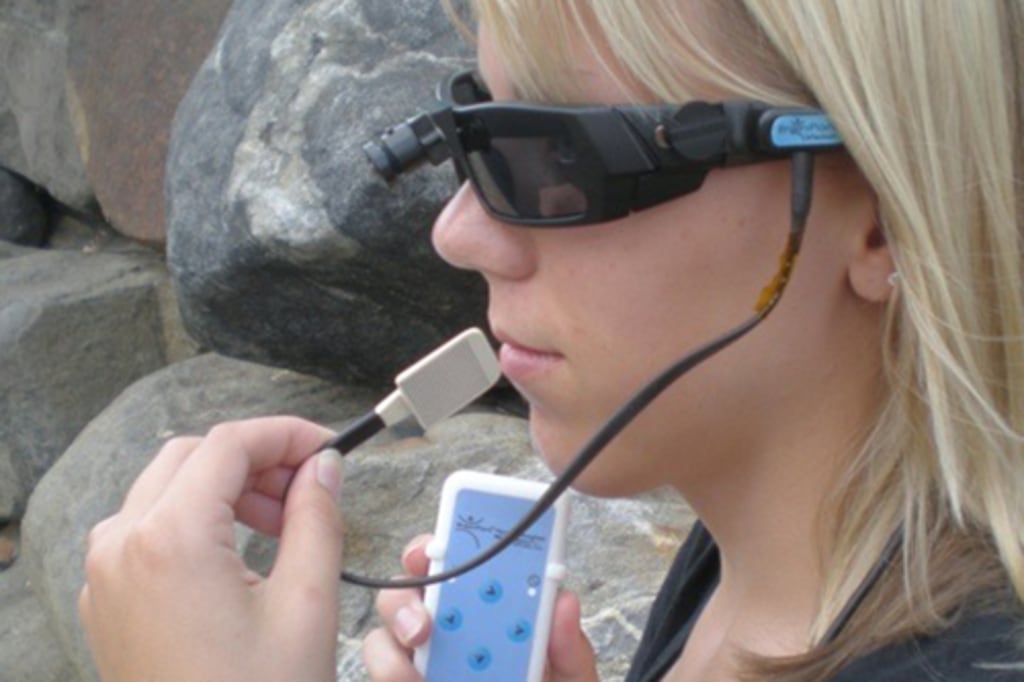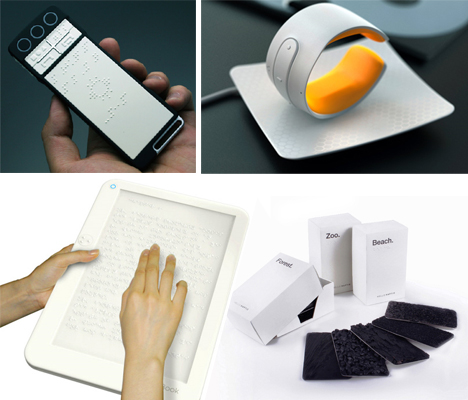Wearable Technology for Low Vision: A Game-Changer in Accessibility
Wiki Article
Empowering Freedom With Assistive Modern Technology for the Blind
The combination of assistive innovation into the lives of people with aesthetic disabilities represents a substantial development in advertising freedom and self-sufficiency. From cutting-edge display visitors to innovative wise walking sticks, these tools not only boost day-to-day navigation and interaction however additionally empower customers to involve meaningfully in different elements of life. As we explore the myriad benefits and real-world applications of these technologies, it comes to be critical to analyze the hidden aspects that add to their performance and the possibility for future growths in this essential field.Overview of Assistive Technology

The growth of assistive innovation is grounded in principles of inclusivity and empowerment. Innovations in software application, equipment, and sensory enhancements supply users with options customized to their specific demands. From display viewers that convert text to speech, to responsive devices that communicate details with touch, these devices change the method individuals involve with their surroundings.
In addition to functional applications, assistive modern technology promotes better social incorporation and participation in different sectors, including education and learning and work (Mobility aids for visually impaired users). As research study and development continue to advance, the potential for assistive technology to better improve the lives of aesthetically impaired individuals continues to be appealing, leading the way for an extra fair culture where everybody can thrive
Sorts Of Assistive Devices
A variety of assistive devices have actually arised to support individuals with aesthetic impairments, each developed to fulfill certain demands and enhance daily performance. These devices range from low-tech options to state-of-the-art advancements, providing diverse choices for individuals.Low-tech tools consist of magnifiers and large-print materials that assist in reading and writing. Braille devices, such as Braille slates and styluses, make it possible for responsive reading and communication. Alignment and wheelchair help, like white walking sticks, aid individuals navigate their setting securely.
On the higher end of the spectrum, digital magnification systems and display readers offer considerable assistance. Electronic magnifiers allow customers to increase the size of message and images on screens, while display readers transform electronic web content into synthesized speech, promoting access to info on computers and mobile phones.
Mobile phone applications additionally play an important role, giving functions like message acknowledgment and navigating support. Wearable technology, such as wise glasses outfitted with enhanced reality, is becoming a promising tool to enhance situational understanding.
Advantages of Assistive Modern Technology
The assimilation of assistive modern technology considerably enhances the lifestyle for people with aesthetic disabilities. These technologies empower individuals by promoting self-reliance, enabling them to navigate their environments better and execute everyday tasks with greater ease. Screen visitors and magnifying software application enable people to access electronic information, cultivating expert and instructional chances that may have formerly been out of reach.In addition, assistive devices such as clever walking canes and GPS applications supply real-time navigating assistance, enhancing wheelchair and security. This boosted autonomy not only enhances self-worth but also urges social interaction, enabling customers to participate even more fully in their areas.
Assistive modern technology also assists in communication, helping customers get in touch with others via voice acknowledgment and text-to-speech applications. This capability is vital for preserving partnerships and accessing crucial info.
Additionally, the personalization options offered with numerous assistive modern technologies make certain that users can tailor gadgets to their certain requirements, additionally enhancing usability and performance. Generally, the advantages of assistive innovation for individuals with aesthetic impairments are extensive, advertising a more comprehensive culture where everyone can pursue their goals and objectives.
Study and Success Stories
Highlighting the transformative impact of assistive technology, various study highlight how individuals with aesthetic impairments have efficiently incorporated these tools into their day-to-days live. One engaging example entails an university student that used screen analysis software program to navigate online sources and academic products successfully. This innovation not only facilitated her education yet additionally improved her self-confidence in joining conversations and group projects.Another study includes an expert who utilizes a smart device application developed for navigating and things recognition. By using this app, he has gained back autonomy in both his individual and job environments, enabling him to commute independently and engage with associates better.
Additionally, a retired person shared her experience with braille e-readers, which enabled her to access a large selection of literary works and remain gotten in touch with her area through book clubs.
These success tales emphasize the critical function of assistive innovation in fostering independence, enhancing high quality of life, and advertising social assimilation for people with visual problems (Screen readers for the blind). By accepting these ingenious tools, individuals can conquer difficulties and confiscate possibilities that contribute to their professional and individual gratification

Future Fads in Assistive Modern Technology
Technology in assistive innovation is positioned to redefine the landscape of assistance for people with aesthetic disabilities. Arising patterns stress the assimilation of expert system (AI) and equipment discovering, which enhance the functionality of devices that help with navigation and info availability. AI-driven applications are now capable of translating visual information in real-time, allowing customers to engage with their setting a lot more individually.Additionally, the development of wearable innovation is progressing quickly. Smart glasses furnished with enhanced fact (AR) can offer audio summaries of environments, transforming exactly how users communicate with public rooms. These gadgets not only promote autonomy yet additionally foster social inclusion.
In Addition, the Net of Points (IoT) is making homes smarter, permitting smooth connection in between assistive tools and daily home appliances. This connection encourages users by making it possible for voice-activated controls and automated responses tailored to private requirements.
Verdict
Finally, assistive technology plays an essential duty in empowering individuals Mobility aids for visually impaired users with visual disabilities by boosting their self-reliance and involvement with their environments. The varied variety of applications and tools available not just facilitates navigation and interaction but likewise advertises social integration and chances for expert and individual development. As developments continue in this area, the possibility for boosting the lifestyle for those with visual impairments will certainly increase, cultivating better autonomy and empowerment.
Report this wiki page